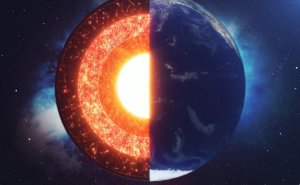There’s a lot that we don’t know about the Earth, like how was life on Earth created? But we also don’t know a lot about the makeup of the planet itself, like how old the Earth’s core is. A new study may turn everything we think we know about the Earth’s inner core on its head. Now researchers say the Earth’s core isn’t a solid compressed ball of iron alloy. But, it also isn’t a completely liquid core either. Instead, the new study proposes that the Earth’s inner core is a mushy mixture of elements such as silicon, carbon, oxygen, and hydrogen.
The researchers published the paper in the journal Nature on February 9, and it offers an interesting look into the core of our planet. Initially, scientists believed the Earth’s inner core was composed of a highly compressed ball of solid iron alloy. However, the findings showcased in the paper seem to point towards something different.
The 3 most common reasons why women cheat, according to relationship experts
First, the researchers note that understanding the Earth’s inner core is difficult for several reasons. Chief among these is the fact that seismological observations have shown a complicated structure that seems to make little sense. One of the currently unresolved problems with understanding the Earth’s core is that it features a low shear-wave velocity that is unmatched by the sound velocities found in iron and iron alloys. This has led the researchers to believe that the core also includes light elements that lend themselves to a superionic state, rather than a solid state. The researchers used computer simulations to try to understand what the core is made of.
Read more: BGR
Ask me anything
Explore related questions





